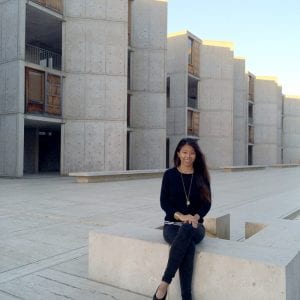NewSchool of Architecture & Design is dedicated to teaching progressive thinking and leading-edge considerations of design. NewSchool faculty are at the forefront of emerging design concepts and research, educating not only their students but the design community at large.
Grace C. Lee, Graduate Architecture student and research assistant at The Center of Healthy Environments at NewSchool and Eve Edelstein, Graduate Architecture faculty at NewSchool were featured presenters at the Psychology of Architecture Conference in Austin, TX, aimed at drawing attention to this understudied but crucial area of research. Attended by students, architects, builders, designers, and policy makers, the conference looked to inspire consideration of the psychological impact of the physical spaces they create and manage.
Grace C. Lee’s presentation, “Wayfinding for Alzheimer’s Disease with Cues from Episodic Memory Loss and Prosopagnosia,” discussed how architects can make design decisions that may make life better for those suffering from Alzheimer’s Disease. Lee suggested that while there is heavy study taking place amongst the medical community, neuroscientists are struggling to understand Alzheimer’s Disease and in the meantime, there is a strong need to make improvements where possible. Research showed it may be possible for architects to make design assumptions based on the commonality of episodic memory loss, prosopagnosia and Alzheimer’s Disease with wayfinding. Wayfinding is a forward thinking architectural focus that explores the effects of specific architectural elements in those with episodic memory loss or prosopagnosia that can then provide cues on what’s beneficial, neutral, or negative for those with Alzheimer’s Disease.
Eve Edelstein also explored the intersection where the physics of form meet the physiology of function in her presentation, “Your Brain is Tuned to Design.” She discussed, in-depth, the human experience of design and how that can best be used to create functional designs in architecture. Eve shared the results of studies that used biosensors, environmental trackers and fully immersive real-time virtual reality simulations exploring the interactions between buildings and the brain, body and behavior and the resulting design principles that in application, better serves human performance, creativity, health and well-being.

 619-684-8800
619-684-8800
